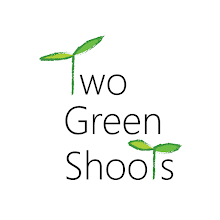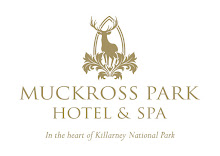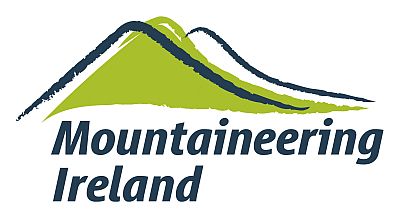Manchán Magan
Mountain Skills 1 In The Burren
I had always yearned to be able to free myself from the tyranny of a way-marked trail, to roam the Irish uplands, free and unfettered, but I was afraid. We prisoners of the wooden-posted tracks feel jeered at by that irritating yellow walking figure carved into each post. Yet, the alternative, of having to sit through classes to study orientation, compass-bearing and map skills always seemed too humiliating to contemplate.
At our most adventurous people like me might pull out a walking guide and follow the endless description of every style, wall and farmhouse, knowing that if we misread even one instruction we’re liable to wander off the hand-drawn map and be irreconcilably lost. After one or two such frightening experiences the, now, dog-earred book gets dumped back on the shelf, while we return, humiliated, to following the yellow figure.
Last month, I finally decided I’d had enough and I signed myself up for the Mountain Skills 1 course run by Outdoors Ireland. (The ignominy of living on an island with such easy access to rugged, untrammelled hills and not daring to access them became too frustrating.)
On a bright February morning I turned up at Kinvarra pier to find a bunch of amiable twenty-to-fiftysomethings dressed in the bright Legoland colours of Berghaus, Jack Wolfskin and North Face. Rather than steering us into a stuffy classroom, the course director, Nathan Kingerlee (owner of Outdoors Ireland) drove directly up into the high Burren, believing that the best way to learn is through hands-on experience.
After a brief introduction to map-skills, Nathan pointed at a particular contour line and told us to make our way there. I stared harder at my map than I had ever done before and set out on the task. The next two days were like this: Nathan teaching us just enough to grasp a new technique and then getting us to put it into practise right away. The adrenalin rush of always being on the edge of one’s knowledge, of having to use acquired experience or common-sense made for an invigorating experience. It sparked fast comradeship as we sought support and clarification from one another. It certainly made it all more fun than any teaching experience I’ve had before. I found myself regretting that I hadn’t done it long ago.
The day sped on with a series of new nuggets of information and a task to hammer each piece home: setting the map in the landscape, gauging contours, planning a route, handrailing a spur, combining the compass with the map. Each lesson was a further step towards independence, towards feeling safe in the worst extremes that Ireland might throw at one. When I messed up and ended up 200 metres off course, I had to contend with the knowledge that if I was on a cliff in heavy mist, I’d be lying at the bottom of it now, with, at best, a sprained ankle. By the second day we were learning how to deal with even this eventuality and gradually gaining confidence from the knowledge of how to plan an escape route in an emergency and what food, clothes and equipment would be necessary to last the many hours it might take for help to come.
We became increasingly aware of how serious the stakes could be in this game, how vital it was to focus and plan and check one’s calculations and decisions repeatedly. I was no longer seeing the map as a series of roads through green or yellow background, it had become a living realm in my mind. The symbols and contours summoning entire 3-D landscapes just as a musical score can invoke an orchestra. I was beginning to speak the subtle language of contour lines or at least interpret the facts and clues they were trying to communicate to me. A map is like great literature, the more you read it the richer and more multidimensional it becomes.
Each lesson was a mini-achievement, a further step towards independence. The tasks were challenging, but rewarding. I felt like a toddler taking heroic steps out to explore wider realms. There was a real adrenaline rush from coming across the brow of a hill and seeing Nathan there waiting, knowing he was going to ask me where I thought I was on the map. There was no chance of bluffing. I looked into his eyes, which had a perfect poker-glaze, honed in the face of mountain blizzards.
I stared back at the map again and something primal sparked in me, some inner ancestral knowing encoded into my DNA eons ago when my ancestors depended on this knowledge for survival. The only reason my bloodline had continued this far was because my ancestors had known instinctively how to read the land, how to follow a spur up and over a mountain, how to avoid steep-sided gullies and recognise re-entrants. With Nathan still waiting for an answer, I looked at the map again and around at the landscape, really looking, seeing beyond the transitory houses, roads and forestry back to the glacial formations that my Neolithic forebearers saw and that the map still sees today and suddenly it was far clearer.
Soon I wasn’t rushing back to Nathan for confirmation and reassurance. I was beginning to trust myself. It’s an impressive take-home from what I thought would be a mind-numbing cub-scout class. I got to spend a weekend in the glorious upland Burren, roaming with the wild goats over the clints and grykes in this archeologically-saturated landscape of thick-bedded limestone slabs. It felt somehow fitting that the area has been associated with
learning ever since the old Brehon and Bardic schools of the 6th century and the monastic settlement of Corcomroe. We were just the latest students to come for guidance to the rugged strangeness of this rocky place and we could leave here now and share our understanding of the landscape just as the monks had done before us.
For more www.outdoorsireland.com
.jpg) |














No comments:
Post a Comment